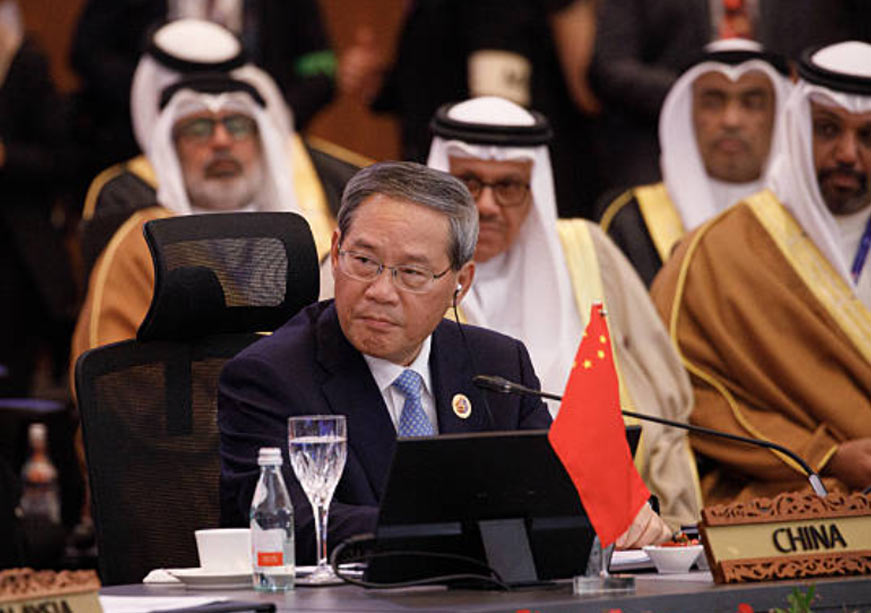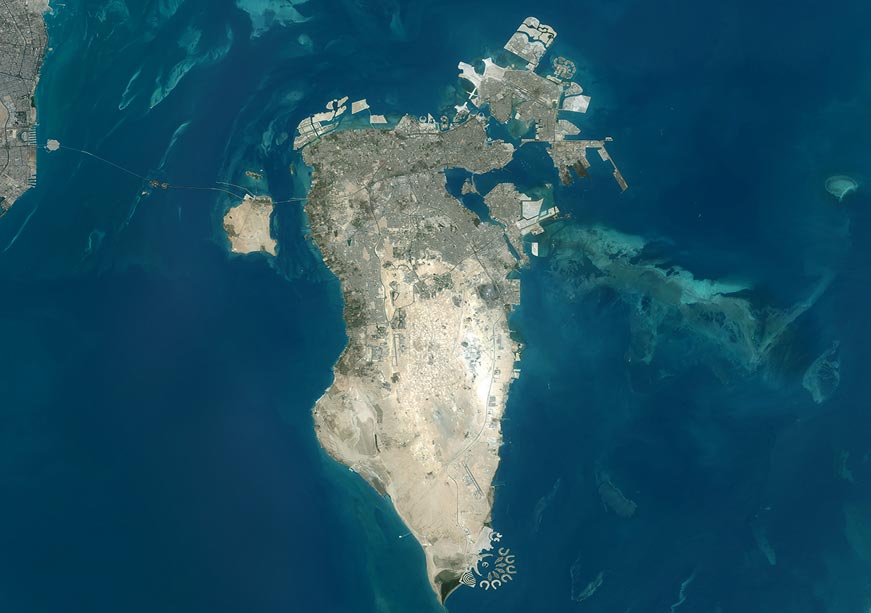After more than two decades of negotiations, China and the Gulf Cooperation Council (GCC) stand on the cusp of finalising a free trade agreement (FTA), having reached consensus on reportedly 90 percent of the terms. Amid growing uncertainty in the Gulf over the reliability of the United States (US), the time is ripe for concluding the talks. Despite this deal’s potential benefits, progress remains elusive.
China–GCC Trade Relations in Transition
The ties between China and Gulf countries have historically been rooted in energy. As a rapidly developing country heavily dependent on manufacturing, China needed oil, and the Gulf needed markets for its hydrocarbons to fuel its own growth. China is now the largest importer of oil in the world, and most of it comes from the Middle East. Saudi Arabia was its top supplier for many years until the sanctions imposed on Russia in 2022 transformed global energy supply chains, relegating the Kingdom to second place.
The relationship has since evolved beyond energy. In 2020, China replaced the European Union (EU) as the GCC’s largest trading partner, with around US$173 billion in exports to China and US$129 billion in imports in 2023. In comparison, the Gulf countries exported around US$80 billion to the EU and US$101 billion in imports in the same year. While oil still accounts a significant portion of the trade ties between China and the GCC, this relationship remains highly asymmetric. The Gulf’s exports to China are diversifying into non-oil goods, especially petrochemical products like plastics and other distillates. Imports from China are significant and include manufactured goods, especially machinery, electrical equipment, and vehicles.
Negotiations for an FTA, which aim to reduce trade barriers and strengthen ties, have been ongoing since 2004. An agreement is expected to further boost non-oil trade in the technology, transportation, logistics, construction, finance, and service sectors. The green energy sector stands to gain, in particular, as reduced barriers to trade could allow for greater investment and technological exchange and advance both parties’ ambition to become global leaders in this field.
In the current climate, an FTA could provide the GCC countries with an opportunity to emerge as alternative hubs for Chinese supply chains that were disrupted by American tariff policy in Southeast Asia.. They could become hubs for re-exporting Chinese goods to third countries, much like ASEAN members Cambodia, Malaysia, Thailand and Vietnam in the past, owing to their strategic location between existing trade corridors and emerging ones like the India–Middle East–Europe Economic Corridor (IMEC).
FTAs are increasingly becoming critical for both parties. China has recently faced some of the highest tariffs under Trump’s administration, with the tariff rate reaching 145 percent in April, even as it experienced trade tensions with the EU. In May, negotiations with ASEAN on an upgraded FTA were concluded, while talks on other FTAs are ongoing. While stressing the importance of such agreements, the GCC has revived talks with several partners as part of connectivity efforts. The UK–GCC deal is the most imminent, with a deal expected by the end of the year.
Obstacles to Reaching a Deal
Several roadblocks in the past have derailed previous efforts to fast-track negotiations and disrupted regular calls to secure an agreement. Talks were first suspended in 2009 after China refused to lift tariffs on GCC petrochemical exports in an attempt to protect its fledgling domestic industry. Although Beijing later reaffirmed its commitment to a deal, disagreements with China over the Syrian civil war and tensions within the GCC that led to the 2017 diplomatic crisis presented further obstacles to an FTA agreement.
More recently, negotiations broke down in 2024 due to Saudi Arabia’s concerns that a flood of Chinese imports would undermine its ambition to become an industrial powerhouse. Since the GCC and China compete in several areas, including petrochemicals, cement, aluminium, and steel, less stringent trade barriers pose a threat to the domestic industry. This is true amid concerns around unfair trade practices like subsidies, thus making this a central issue in negotiations. There is a lot at stake for the Gulf, since unfair competition could undermine economic diversification efforts and prevent further progress on addressing unemployment. Still, there is less of an overlap between China and the GCC in economic structure as compared to between China and ASEAN, which were unable to reach an FTA.
The broader worry in the Gulf is that countries could become financially overexposed to Beijing. Since China is already the region’s top trading partner, the current “Pivot to the East” seems more focused on expanding ties with other countries like ASEAN members or Japan. If the GCC economies are too reliant on China, they not only risk exposure to China’s volatile domestic economy but could also face the consequences of US policies aimed at curbing its rival in a situation of escalating global power competition. An increase in Chinese-backed project finance could also increase Beijing’s leverage in the Gulf countries.
Despite good relations between Trump and the Gulf leaders, rising Chinese influence would be a cause for concern in the US. Given the close cooperation between the US and the GCC around security and defence, an FTA announcement with China could be seen as a provocation in Washington. While the Gulf countries appear to be considering new alignments, they remain overwhelmingly reliant on the West in this realm, making open tensions with Washington contrary to their interests.
Moreover, the possibility of a China–GCC FTA is a concern for the EU, which resumed its own talks with the United Arab Emirates last year, as European goods could lose competitiveness in the Gulf. At the same time, keeping China–GCC negotiations ongoing could serve as a bargaining chip in the Gulf’s negotiations with the West. The potential for an FTA with China could remind Western policymakers that their absence means an opportunity for China and potentially promote progress towards an EU–GCC deal.
For now, it seems that a China–GCC FTA is not yet on the horizon despite agreement on many of the provisions. Bilateral agreements like the ones the EU have been signing with individual GCC countries in the absence of a broader deal could inch China closer towards an eventual China–GCC FTAt. Yet, they could also create frustrations among the GCC countries and derail future talks, with no guarantees that the bilateral talks with China would succeed than a GCC-wide deal. In the absence of a major shift in regional dynamics, it seems the China–GCC trade agreement may remain more of a long-term aspiration than an imminent reality, underscoring the limits of China’s strategy in the region.
Lillian Aronson is a Visiting Fellow at ORF Middle East.












